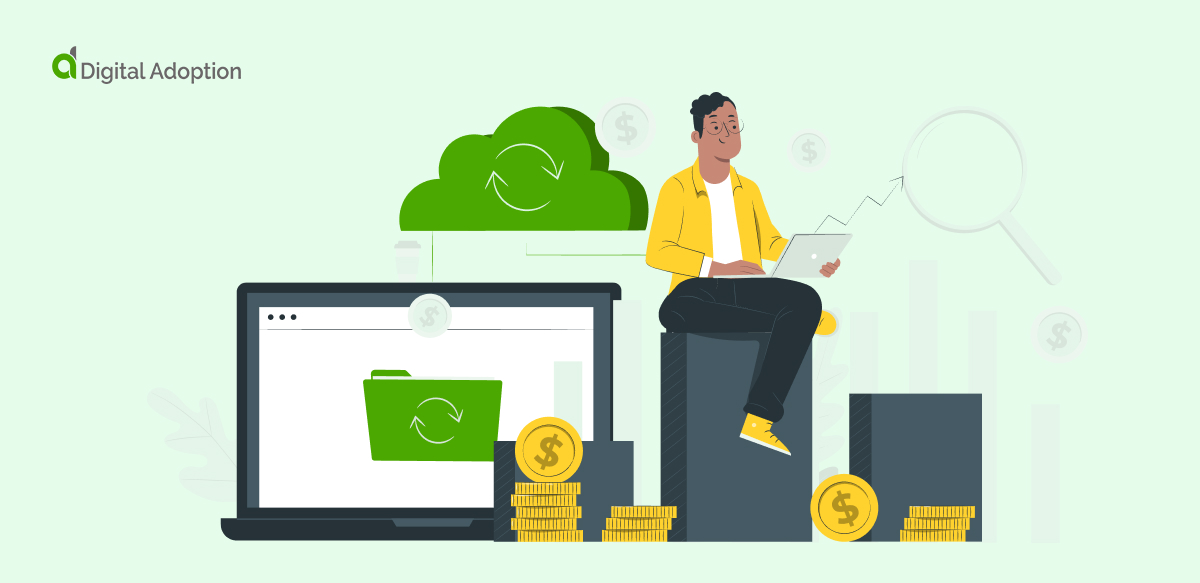The cloud has become ubiquitous in business, with Gartner predicting that global cloud spending will reach nearly $500 million by 2022. The cloud provides many benefits over on-premises infrastructure, from increased agility to scalability. But each of these benefits comes at a cost, which builds over time, and there are pros and cons of being a cloud-centric business.
Cloud cost optimization is a significant challenge for cloud-centric businesses. The pay-as-you-go model of cloud computing can lead to unforeseen costs, which can quickly spiral out of control. Adequate digital adoption solutions and governance practices can help avoid these issues, but they need to be tailored to the specific needs of each organization.
But what is cloud cost optimization? Why is it essential for the modern enterprise scale of business? And what can a brief history of cloud cost optimization tell us about this service today? We will explore these questions, beginning with a definition.
What Is Cloud Cost Optimization?
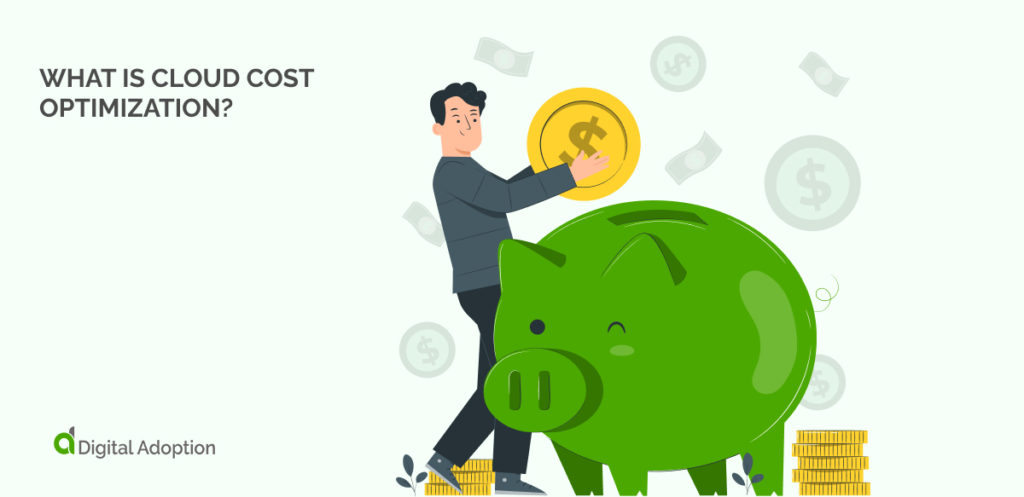
A proactive cloud cost management strategy lowers the number of cloud licenses or apps, preventing waste and security risks. This approach also aids in the reduction of operational costs by identifying underutilized software that companies can optimize for their operations to identify instances of cloud waste.
Cloud services are better for customers than on-premises cloud infrastructure due to the flexibility and scalability of features and pricing, improved business outcomes, enhanced competitive edge, and increased revenue. The cloud revolutionized how organizations buy software licenses, and most firms now focus on cloud applications. On-premises apps are increasingly rarely used today.
The problem with too many cloud solutions is that it creates infrastructure tension. A cloud management strategy can help to lower financial spending by optimizing strategies.
The most significant reasons for wasted cloud resources are:
- Unclear ownership.
- Automatic renewals of unused licenses.
- The lack of visibility of overlapping cloud subscriptions can lead to waste.
These issues occur because of a lack of policy on SaaS application procurement, leading to companies paying fees for tools with the same purpose or ones they no longer use.
SaaS spend optimization helps organizations track which subscriptions they own and use, but in what other ways is this crucial for business?
Why Is Cloud Cost Optimization Essential For Modern Enterprise?
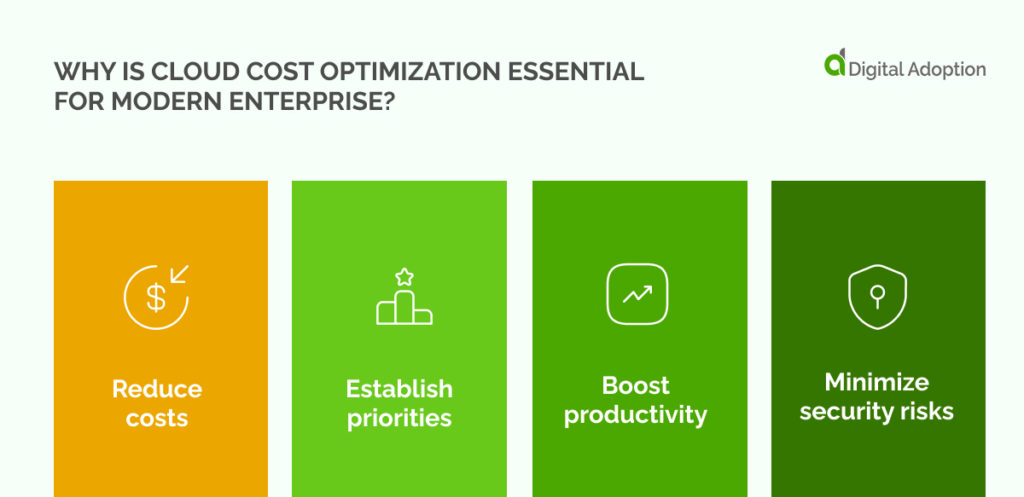
Without SaaS spend optimization, companies waste enormous amounts of capital in over and under-subscribed and unused SaaS, IaaS, and PaaS solutions. Using technology value optimization to define the values of currently utilized technologies and manage them efficiently is key to optimizing resources.
Reduce costs
When businesses optimize licenses and accounts, they save a lot of resources. When you implement cloud spend optimization, you can control and manage your software expenses as you see where businesses create waste with unused licenses and underutilized or unused applications.
Establish priorities
Understand what software you use, how you use it, and what needs it fills. This information aids in the prioritization of solutions as you compare the benefits of tools you utilize to those of new ones. Reports and expenditure logging help your firm track how much money is spent by gathering usage data from the apps and services you employ.
Boost productivity
You can help your employees make the most of their digital tools by eliminating duplicate software. They’ll work more efficiently because streamlined spending will create better workflows. To see if your company needs new software, hold a meeting to discuss business needs and if the current software meets these requirements satisfactorily.
If you want your organization to be more productive and efficient while saving money, start by monitoring employee digital adoption rates and encouraging cross-departmental collaboration. By sharing skills and learning across departments, employee productivity will increase.
Minimize security risks
Cloud cost management lets IT team members change or delete software users based on the function to minimize security concerns and extra access while lowering costs. Complete insight into all cloud spending and licenses allows you to monitor employees’ app usage. This procedure exposes when workers use applications when they shouldn’t be doing so.
These are the many reasons cloud spend optimization is crucial. But what historical approaches to cloud cost management brought us to today’s cloud marketplace?
A Brief History Of Cloud Cost Optimization
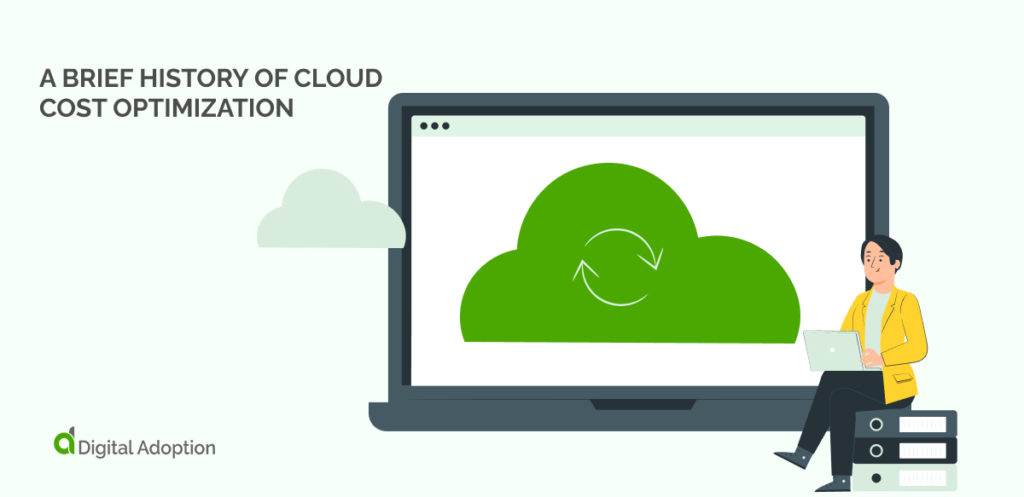
When software developers saw hundreds of applications migrating to the cloud, they realized companies could manage infrastructure as code more efficiently with robotic process automation (RPA). The AWS Trusted Advisor tool makes cost-saving suggestions to help you run your application in the cloud more effectively.
Developers wrote scripts as needed for essential cloud resource management, but digital process automation allowed organizations to report and take action upon resources much more efficiently. Teams involved in developing early cloud management software ensured there were no unused resources as a priority. They also noted that cost controls would be necessary eventually, so they implemented them early on.
For example, since most companies only utilize development environments during the day, developers allowed the automation capability to shut down and restart resources in bulk at the end of the business day and restart them the next morning.
The capability to report resource properties, usage, and Cloudwatch metrics for resources allows IT staff and team managers to locate and tackle inefficiency and waste. Reviewing the pricing models is now considered the best practice to create savings from hundreds or thousands of cloud resources, which can total millions of dollars over a year.
We will now explore strategies to reduce cloud costs since we understand the background on which cloud optimization occurred.
10 Cloud Cost Optimization Strategies
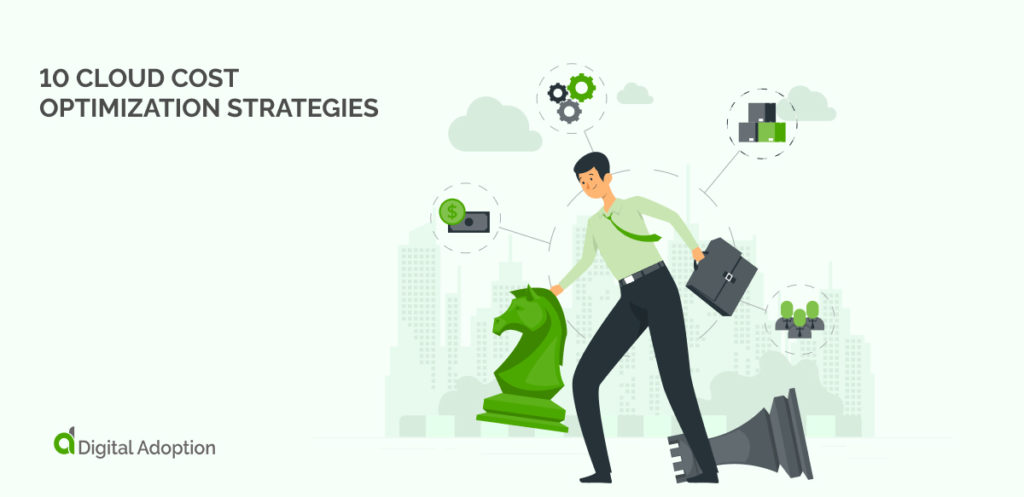
These are the ten best strategies to ensure your business goals align with the lowest possible cloud costs. The first is making the cloud technology stack visible to all employees.
1. Make your cloud stack visible
The visibility of the cloud tech stack is essential to the cloud spend optimization process. You can achieve this by taking stock and making an expenditure inventory, including all expenses, contracts, and the number of licenses your company has. Doing so lets your business see their use and each cloud service and app’s purpose and provides data to support decisions on future optimizations.
2. Regularly take stock
To optimize cloud expenditures, consider your current usage and make adjustments. Businesses of all sizes with numerous software and subscriptions have varying demands regularly. Monthly reviews ensure that the firm effectively utilizes all cloud applications and serve as reminders.
3. Identify unauthorized applications
An unauthorized app may be any software that performs the same tasks as authorized apps. It can also imply that an employee has unlawful access. Communication is needed to establish and maintain who has access to software, communication is required.
If you find that an employee has purchased a Dropbox account, you can remove the unauthorized account and consolidate unnecessary SaaS licenses by using only Google Drive. This action is possible because your company’s existing users likely utilize Google Cloud services such as Google Workspace and store documents on Google Drive.
By taking this action, the company saves on Dropbox fees. In addition, communication improves as IT or HR reminds all staff of this change and encourages them to use Google Drive for document storage.
Companies must address security flaws as soon as possible, especially when an organization’s HR systems store sensitive employee data. To reduce risk, companies must establish rules to deal with unauthorized application usage promptly and securely, with communication at its heart.
4. Promote organization-wide adoption of apps and productivity
To ensure that your organization reaps the maximum benefits of a helpful app, promote it on a small scale to get as many people using it as possible. Then, provide employees with information about why cloud software is important for optimizing technology value in the company.
Assigning team champions for specific software may provide staff members a place to go if they want to learn more about the basics or nuances of new software.
5. Negotiate contractual agreements
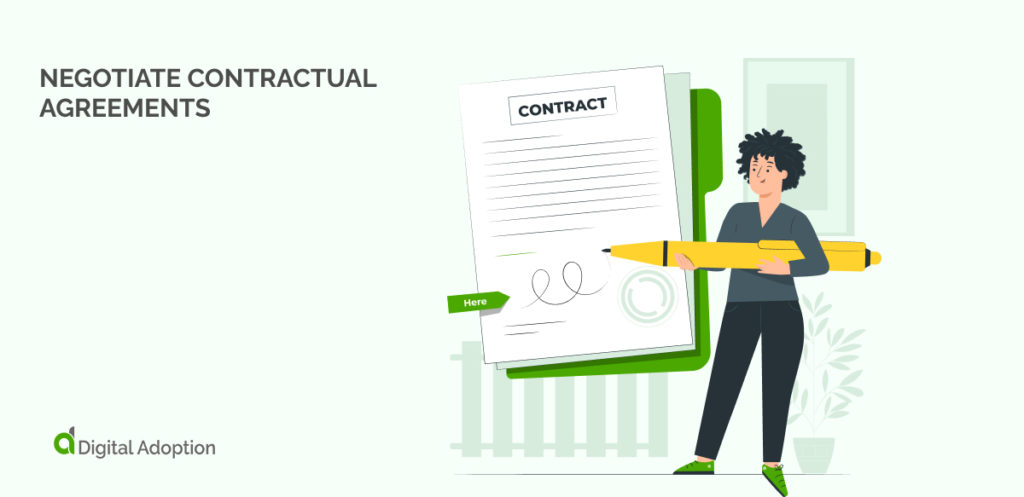
Many factors influence your ability to get the most valuable deal from a cloud service provider. A few examples are terms, usage, volume, and loyalty. When it comes to software subscription renewals, these elements are essential because they influence whether or not you will receive the same price or the vendor will offer a discount.
6. Optimize Cloud Costs and Pricing Review
Eliminating unused licenses is the best way to optimize your cloud spending, and a review and adjustment schedule will help ensure you only have the cloud solutions you need and use.
7. Integrate workflow automation
Cloud management platforms can ensure that employees have the correct licenses for their accounts by allocating them based on usage patterns and data. Automation ensures that the system automatically assigns the correct permits to new staff members as they join.
8. Regularly collect employee feedback
User analytics indicate which apps are successes and failures. Leaders use this data to stop frustration, wasted time, and low productivity by decreasing or removing features that staff doesn’t use. Companies save money by only paying for what they need.
9. Make the cloud application inventory available to employees
Encourage employees to adopt cloud resources such as SaaS, PaaS, or IaaS by making the cloud application inventory available and reducing user access. When staff members know what specific app to use for their duties, they will be more likely to comply with company protocols.
10. Plan for future cloud growth
Cloud spending plans must create a vision for the future to ensure that resources are always available to invest in new SaaS, IaaS, and PaaS technologies. Successful companies conduct research continuously to invest in new cloud cost optimization tools. Ensure that IT staff collaborate with the finance team to build a plan for growth and development to make spending the core of business sustainability and expansion.
Ensure that IT personnel work with the finance team to create a growth and development plan. This plan will ultimately lead to an optimized cloud bill as a core business sustainability and expansion component.
Software and Automation Needs
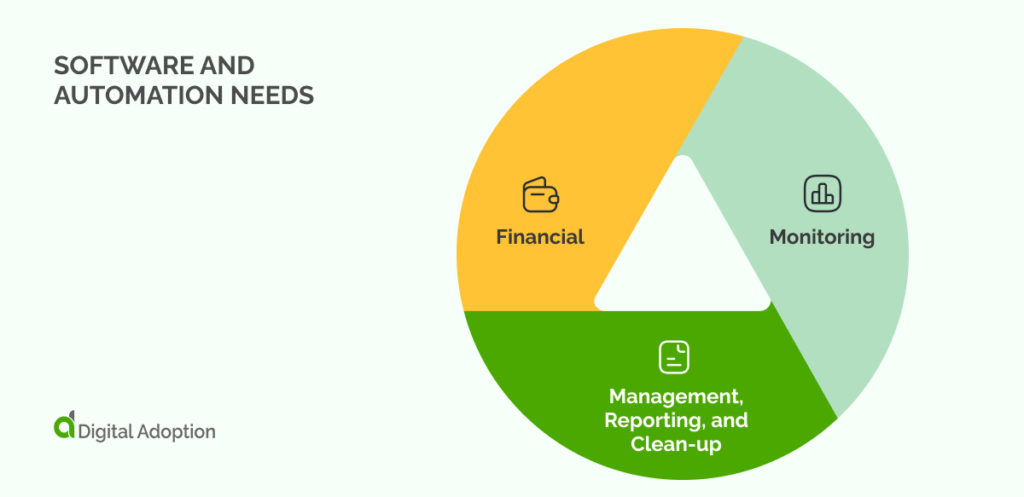
Automation is a massive part of many business processes today, and this is especially the case with cloud cost optimization strategies. Automation supports productivity, reliability, and data governance, principles of a successful cloud cost optimization strategy. Cloud cost intelligence is also supported by automation, as a lot of data can be generated faster than staff can create manually.
Automation can help manage hybrid and multi-cloud systems by uniting them under a set of processes, improving scalability, consistency and speed. The financial aspect is the first to automate to control cloud costs.
Financial
By graphing cloud expenditure over time and by expense type as well as a cost center, it is possible to understand trends and create cost savings to reduce the cloud bill. If companies make data and graphs available daily, monthly, and yearly, they create healthy transparency within the organization leading to friendly competition.
By constructing an automated central application development and deployment platform, Ascend Money streamlined operations among different geographical areas. This action also increased consistency and the ability to handle more scale and reduced task completion time by 57%.
Monitoring
To optimize your resources most effectively, you need metrics for every area of cloud resource utilization versus capacity as part of a robust approach to cloud cost intelligence. Capital One created a tool by factoring in history for “the four corners of utilization metrics”: CPU, memory, disk, and network usage. This system generates instance-type recommendations based on past data and sends alerts if there are unusual spikes in costs or activity levels.
Management, Reporting, and Clean-up
Keep track of everything in your cloud so that nothing goes unused or gets forgotten. By examining the overall composition of your cloud fleet, you can also gain insights into capacity reservations and potential ways to optimize costs further.
Now that we have established the automation capabilities, what are the best practices to ensure the best cloud cost optimization?
20 Best Practises For Cloud Cost Optimization
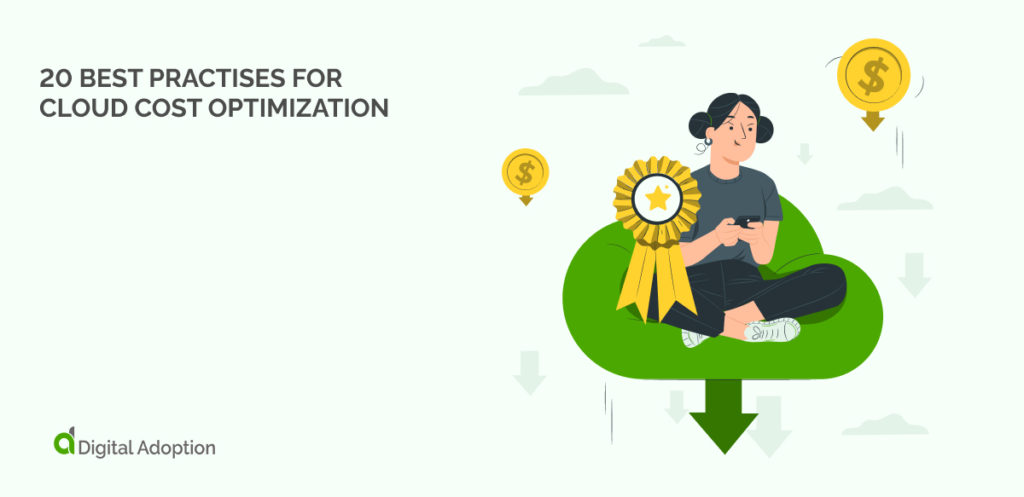
These twenty best practices will help optimize your cloud spending, beginning with understanding usage patterns to forecast future cloud environment needs.
1. Understand Usage Patterns & Forecast Future Needs
Vendors of cloud services give billing details describing the cost. Leverage these details to identify high-cost areas and save money. Analyze and prioritize high-cost workflows and services. Track and create analytics from usage reports to inform and forecast your future needs.
2. Compare Pricing Models
Communication is vital when sharing information with all relevant parties about costs measured against the type and scale of business requirements. Executives, product leaders, engineering leaders, and other appropriate parties must communicate their needs as part of the best cloud cost optimization practices.
3. Automate Resource Allocation
Automating resource usage reports makes cloud cost optimization strategies efficient and allows staff to focus on higher-level tasks. Human error can often lead to inaccurate data on usage data of premises infrastructure or the cloud, such as when developers and administrative staff overlook de-provisioning a temporary server after they have provisioned it.
When such instances occur, Azure or AWS reserved cases result in the vendor overcharging the company for resources it no longer utilizes. Best cloud cost optimization practices, such as automated resource allocation, help establish available or unused resources and remove them to reduce unnecessary expenses.
4. Utilize Reserved Instances
Companies can purchase Reserved instances (RIs) from cloud providers to give significant discounts. When purchasing an RI from a company like Amazon Web Services (AWS), Microsoft Azure Cloud Service, or Google Compute Engine, they offer instance types that suit your needs. In exchange, you pay upfront without being charged monthly fees, unlike other services.
This action results in using fewer resources than expected during any given month, then this money is saved, and there is less strain on their infrastructure.
5. Take Advantage of Discounts & Credits

Cloud vendors often reward loyal customers with discounts or credits. When renewing subscriptions, ask your vendor about a discount if you pay more than one year in advance or if other reduced rates are available.
6. Delete Unused Resources
An essential aspect of optimizing costs is consolidating unused technology resources and deleting them. Cloud vendors charge for idle resources even when companies do not use them. If your company uses a CPU at 10% of its capacity, consider better utilizing it to save costs, such as merging them across different systems.
Leveraging cloud features such as on-demand options, auto-scaling, and load balancing allow you to scale up capacity when you need.
7. Make An End-To-End Budget
Ensure everyone understands their budgets and objectives for each project, as this is a considerable element in lowering costs. Engineering executives should have talks with CEOs and product leadership to learn about cost needs.
Vendors should base product requirements and features on how they will ultimately be delivered to customers, for example, as part of a free trial or enterprise plan. Companies must reference these requirements during later planning and development stages, alongside other important factors such as speed and resiliency.
8. Implement Complete Visibility Of Your Cloud Software Portfolio
Create a clear visualization of all your app subscriptions, user licenses, SaaS costs, and contracts. Ensure that all apps managed or unmanaged by the IT department are included so an incomplete picture of app usage does not create that waste. When you achieve high visibility of your app matrix, you can make better-informed decisions about cancellations, future investments, and renewals. Doing so allows you to optimize your SaaS spending, increasing SaaS ROI.
9. Identify Idle Resources
Optimizing cloud costs can be as straightforward with a few clicks. It is essential for administrators, developers, or anyone responsible for managing your account on AWS or Azure to make sure they de-provision any temporary servers after jobs have finished. This practice avoids inflated bills from resources purchased but unused.
10. Right-Size the Services
Right-sizing your cloud computing services can be difficult. But it is necessary to ensure that you use the most efficient amounts of memory for each instance. If there’s anything left over after right-sizing, consider removing unnecessary capacity from these resources, so they work better with what remains.
11. Use The Best Storage Solutions
Amazon S3 is an easy-to-use, reliable cloud storage service. It has almost unlimited capacity and allows users to store their data quickly, partly because of its user-friendly interface and integration capabilities across multiple platforms. These capabilities include AWS or external services, which companies can quickly implement into any existing workflow with minimal time.
Pricing options depend on the type you choose, so check how much space Amazon gives per month and which plan is the least expensive before signing up.
12. Use Savings Plans
The Savings Plans pricing model is an innovative way to save on your AWS usage. Sign up for a one to three-year commitment, and the prices will be consistently low monthly. This method can also help you reduce your AWS spending by 70%.
13. Leverage Spot Instances
Unlike reserved instances, spot instances can be purchased at a low price and are more reliable than their counterparts. Those who need the service quickly but don’t plan on running long-term jobs or processes through them are perfect because it is difficult to judge when a batch job will end.
14. Choose a Single or Multi-Cloud Deployment
The single-vendor approach is typically cheaper and easier to manage, but multi-cloud solutions can provide benefits like increased availability. Evaluate your organization’s needs before deciding how many vendors you would like to handle data storage.
15. Monitor Cost Anomalies
The AWS Cost Management console is essential when managing your cloud costs. The feature load monitoring and cost analysis tools help you stay on top of what’s happening with AWS bills, so your budget stays within the parameters set by company leaders.
A great way to optimize overall spending while minimizing surprises down the line is to use machine learning in conjunction with human intuition.
16. Eliminate Unused Elastic IP Addresses
Eliminating unused elastic IP addresses is a way IT can reduce new resources to save money.
You may detach an Elastic IP address from a running instance or network interface at any time. You can then reassociate the Elastic IP address with another resource after disconnecting it.
17. Review and Reduce Software License Costs
License management is a challenge. Companies can find commercial and public AMIs (Amazon Machine Instances) on the AWS Marketplace with easy license tracking tools. This tool helps reduce spending by identifying idle or unneeded licenses.
18. Implement a Cloud Native Design
When you’re looking to build a new system or upgrade your legacy system, there are plenty of ways that using the cloud can save time and money. One example is designing with auto-scaling capabilities for when demand increases unexpectedly – which often happens in today’s data-rich environment.
The Well Architected Tool provides best practice recommendations on how exactly to do so while still leveraging AWS’ extensive documentation. It also utilizes expertise during implementation, which helps reduce costs significantly as it understands what parts need updating from legacy environments.
Design choices should consider what’s most important to your organization, such as speed or cost savings. For example, a quick DevOps pipeline might not save money. Being practical and finding a balance of needs is critical.
19. Track Cost Center Spending
Given the wide range of cloud providers, keeping track of your spending is difficult. Each cost center may have its AWS account for ease of reporting. If multiple teams with various budgets share one account, tracking expenses is more complicated.
Implement a standard identification method like applying resource tags to identify cloud resource ownership quickly. This way, you can align cost centers to the required reporting granularity using fewer resources.
20. Optimize Costs At Every SDLC Level
Including cost optimization in the software development lifecycle (SDLC) is vital to ensure financial stability. A plan for how much you’re willing to spend on each project and when they will be paid back with interest or profit margins eliminates the need for a contingency fund.
There are four steps to integrating cloud cost optimization into the SDLC:
- Plan: Create a rationale for the budget and ensure it is data-driven to guide technical, debt-related decisions as part of the product roadmap. Doing so helps minimize unexpected costs and adjust the budget using flexibility and agility.
- Operate and deploy: Identify unexpected costs quickly and adjust budgets with agility.
- Design and craft: Record all necessary data to inform architecture decisions based on optimal resource usage.
- Review: To report operational expenditures and return on investment (ROI) with business initiatives and break down costs by team, feature, and product.
These steps allow your company to optimize cloud costs in the software development lifecycle to save resources.
Saving Money and Time In The Cloud
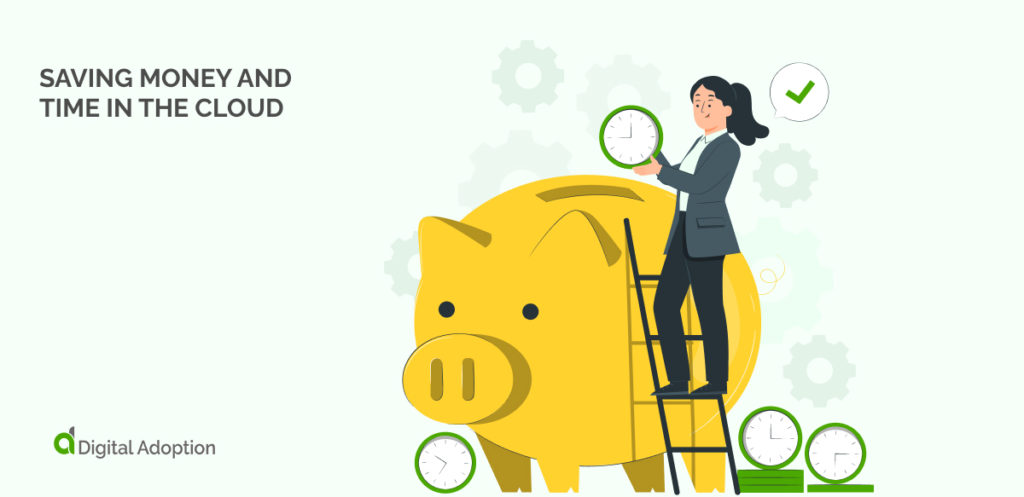
Consider how your business is presently functioning in the cloud. Is there a transparent Cloud Operating Model for your firm? Have you established a FinOps organization or a Cloud Center of Excellence?
When you have answered these questions, it is easy to see that although cloud cost optimization might seem daunting, it simply requires two things. These two components are nurturing and maintaining good habits and recording metrics and analytics to monitor your progress and continuously lower your end bill. If achieved successfully, a cloud optimization strategy can support digital resilience in the future.

